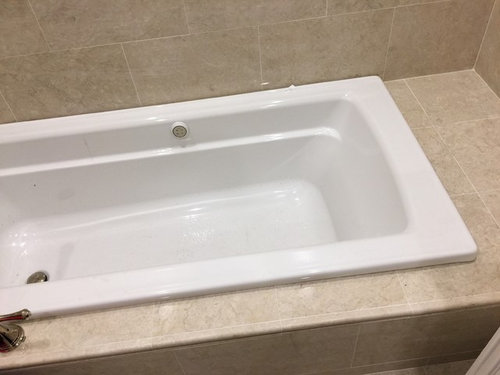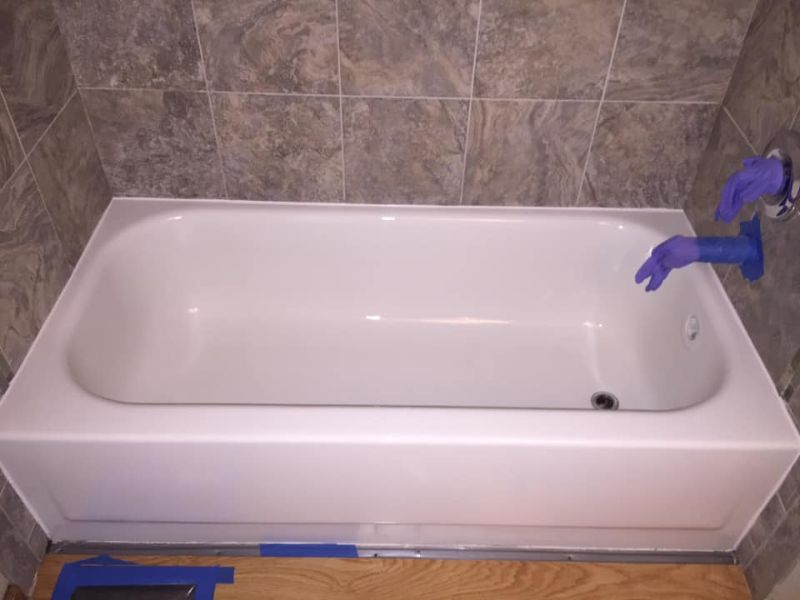Exactly How to Install a Bath Tub Yourself
Exactly How to Install a Bath Tub Yourself
Blog Article
What're your beliefs about How to Install a Bathtub Yourself?

Mounting a tub isn't exactly brain surgery, but it does call for strong plumbing, carpentry, and also often, tiling skills. Changing an old tub with a new one is likewise a moderately hard job. If the old tub is conveniently accessible, the task can move immediately; if you have to open up a wall to get rid of the old bathtub as well as position the brand-new bathtub, the job is much harder. In either instance, the job is within a residence handyman's skills, although you will need an assistant to move out the old bathtub as well as embeded in the new one. See to it you have certified yourself for the task and also are comfortable trying it. Rather than employing a specialist to take over a halfway-completed job, it is better to think about employing one before you start. Chances are you may require a professional plumber to make tube links.
This article will certainly aid you set up a brand-new bathtub in your bathroom if you have actually currently purchased a new bathtub and don't require to change the plan of your previous water pipes.
Your tools and also material checklist must comprise the following:
Preparing for the Setup
To start with, the sustaining structure supplied with the bath must be fitted (if called for) according to the manufacturer's instructions. Next off, fit the faucets or mixer to the bath tub. When fitting the tap block, it is very important to see to it that if the tap comes with a plastic washer, it is fitted in between the bathroom and also the taps. On a plastic bath, it is likewise practical to fit a supporting plate under the taps unit to prevent strain on the bathtub.
Fit the flexible tap ports to the bottom of both faucets making use of 2 nuts and olives (in some cases supplied with the tub). Fit the plug-hole electrical outlet by smearing mastic filler round the sink electrical outlet opening, and afterwards pass the electrical outlet via the hole in the bath. Use the nut supplied by the producer to fit the plug-hole. Take a look at the plug-hole electrical outlet for an inlet on the side for the overflow pipe.
Next, fit the end of the flexible overflow pipeline to the overflow electrical outlet. Afterwards, screw the pipeline to the overflow face which need to be fitted inside the bathroom. See to it you make use of all of the supplied washers.
Link the trap to the bottom of the waste outlet on the tub by winding the thread of the waste outlet with silicone mastic or PTFE tape, and screw on the trap to the outlet. Connect the bottom of the overflow tube in a similar manner.The bathroom ought to now be ready to be suited its last placement.
Removing Old Touches
If you require to change old faucets with brand-new ones as a part of your installation, then the first thing you should do is disconnect the supply of water. After doing so, switch on the taps to drain any type of water staying in the system. The procedure of eliminating the existing faucets can be rather problematic due to the restricted access that is frequently the case.
Use a basin wrench (crowsfoot spanner) or a faucet tool to undo the nut that connects the supply pipes to the taps. Have a cloth ready for the remaining water that will certainly originate from the pipelines. When the supply pipelines have been eliminated, use the same tool to loosen up the nut that holds the taps onto the bath/basin. You will need to quit the solitary taps from turning throughout this procedure. When the taps have been removed, the holes in the bath/basin will certainly need to be cleaned up of any type of old sealing compound.
Prior to carrying on to fit the new faucets, compare the pipeline links on the old taps to the brand-new faucets. If the old faucets are longer than the new faucets, after that a shank adapter is needed for the new taps to fit.
Mounting the Tub
Using both wooden boards under its feet, position the tub in the required placement. The wooden boards are handy in uniformly spreading the weight of the bath tub over the area of the boards as opposed to focusing all the weight onto 4 tiny points.
The following objective is to ensure that the bath tub is leveled all round. This can be achieved by examining the level as well as adjusting the feet on the tub until the level reads degree.
To install faucets, fit the bottom of the furthest adaptable tap adapter to the suitable supply pipeline by making a compression join; then do the exact same for the various other tap.
Activate the supply of water and also check all joints and also new pipework for leakages and tighten them if necessary. Fill up the bath tub and additionally check the overflow electrical outlet and also the typical electrical outlet for leaks.
Lastly, deal with the bath paneling as explained in the manufacturer's instruction manual. Tiling and sealing around the bath tub should wait up until the bath tub has been utilized at the very least once as this will resolve it right into its last position.
Suitable New Touches
If the tails of the new taps are plastic, after that you will certainly need a plastic port to stop damage to the thread. One end of the port fits on the plastic tail of the faucet and the various other end provides a connection to the current supply pipelines.
If you need to fit a monobloc, then you will certainly call for reducing couplers, which links the 10mm pipeline of the monobloc to the conventional 15mm supply pipeline.
Next off, position the tap in the installing opening in the bath/basin making certain that the washers are in location in between the faucet and also the sink. Secure the tap in place with the maker provided backnut. Once the tap is safely in position, the supply pipelines can be attached to the tails of the faucets. The taps can either be connected by using corrugated copper piping or with typical tap adapters. The previous kind needs to be connected to the faucet finishes initially, tightening up just by hand. The supply pipelines can later on be attached to the various other end. Tighten both ends with a spanner after both ends have been linked.
Tiling Around the Bathtub
In the area where the bathroom meets the floor tile, it is needed to secure the joins with a silicone rubber caulking. This is essential as the installation can move sufficient to split a stiff seal, causing the water to pass through the wall surface in between the bathroom and also the tiling, bring about difficulties with wetness and also feasible leakages to the ceiling below.
You can select from a variety of coloured sealants to assimilate your components as well as fittings. They are sold in tubes and cartridges, and also can securing voids as much as a width of 3mm (1/8 inch). If you have a larger void to load, you can fill it with twists of drenched paper or soft rope. Keep in mind to always fill up the tub with water before sealing, to allow for the activity experienced when the bathtub is in use. The sealer can fracture rather early if you do not take into consideration this motion before securing.
Additionally, ceramic coving or quadrant tiles can be used to border the bathroom or shower tray. Plastic strips of coving, which are easy to use as well as cut to size, are also conveniently offered on the market. It is advisable to fit the floor tiles using waterproof or water resistant glue as well as grout.
Bathtub Installation
How Important Is A Bathtub To Your Home?
High-quality baths, showers, and other bathroom updates are necessary when considering a smart investment in your home. It’s a room that you go to every day and one that is constantly being used by guests.The bathroom is one of the top trafficked rooms in a home and also one of the most valuable in terms of home resale.
Install Piping Before Tub
You will be using your existing drain and waste vent system, but pipes required include the hot and cold water supply lines and a pipe leading to a shower head. A mixing valve and shower head are also needed. Air chambers may be required.
Position the Tub
Lower the tub into place so that the continuous flange fits against the wall studs and rests on 1’x4' or 2’x4' supports. Anchor the tub to the enclosure with nails or screws inserted through the flanges into the studs.
NOTE: Remember, bathtubs and shower stalls may require support framing. A bathtub filled with water is extremely heavy, so check building codes and framing support before installing the tub.
Assemble Drain Connections
Assemble the bathtub drain connections by connecting the tub overflow with the tub drain above the trap, not beyond it. The trap will have a compression fitting that screws over the arm of the overflow assembly.
Place a Pipe For the Shower Head
First, locate a brass female threaded winged fitting and attach it to a framing support via a screw or a nail. Then run a pipe up the wall for the shower head. Sweat or solder the other side of the brass fitting to the top of the pipe.
Attaching Hot and Cold Water Lines
Attach your water lines for both hot and cold by sweating these directly into the hot and cold ports of the mixing valve. The mixing valve will be how water enters the tub’s system, not by the pipes themselves.
Install the Spout
Extend a piece of 1/2 inch pipe, or whichever length is specified in the manufacturer’s instructions, for the tub spout. Sweat on a male threaded fitting at the end of the pipe or use a brass nipple of the proper length and a 1/2 inch cap.
NOTE: At this point you should have your rough-in plumbing work inspected before proceeding further.
Check For Leaks
Restore the water pressure and check the drain connection and the supply pipes for any sign of leaking.
estore the Bathroom Wall
Replace the wall with moisture-resistant drywall as a base for your wall covering. Seal the joints between the wall and your new tub with silicone caulk as protection against water seepage.
https://www.berkeys.com/2016/12/02/bathtub-installation-dallas/

Do you really like reading about How to Install a Bathtub? Try to leave feedback down below. We would be delighted to hear your thinking about this write up. We hope that you visit us again before long. Do you know another individual who is very much interested in the subject? Do not hesitate to share it. We value reading our article about How to Install a Bathtub Yourself.
Request Service
Report this page